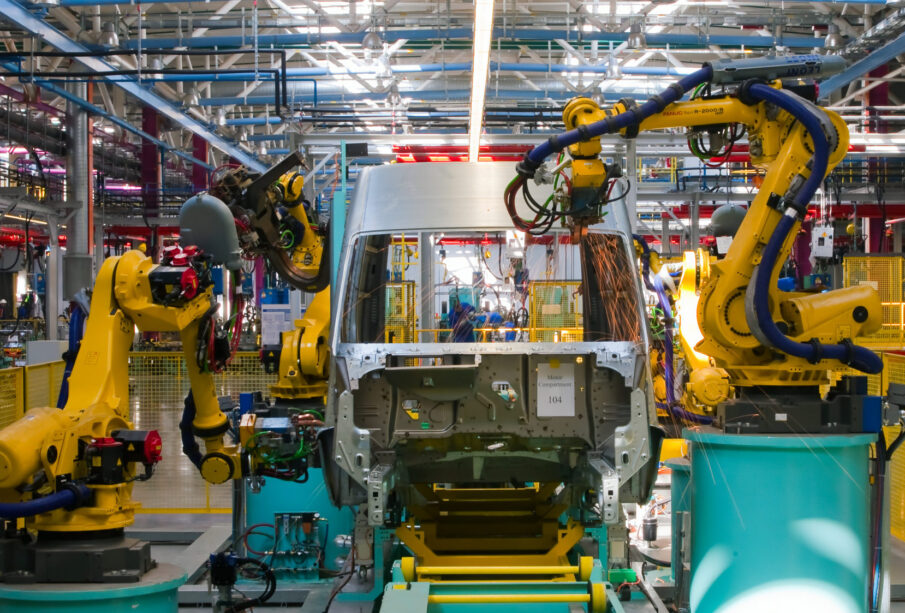The Rise of Cobots: Collaborative Robotics in Manufacturing

Automation has always played a crucial role in increasing efficiency and productivity in manufacturing. However, traditional robots have limitations regarding flexibility and safety in working alongside human workers. That’s where collaborative robots, or cobots, come into play. With advanced technology and innovative design, cobots are revolutionizing the manufacturing industry by creating a harmonious, safe environment where humans and machines work on a range of tasks using the same machinery. Cobots come with significant benefits, already seen in their impact on the manufacturing sector, but their proper usage requires an understanding of the costs and limitations associated.
What are Cobots?
Cobots, or collaborative robots, are specifically engineered to operate alongside humans within the same workspace. In contrast to traditional robots of the robotic industry that necessitate safety barriers, cobots are integrated with advanced sensors, machine learning capabilities, and safety mechanisms, enabling them to comprehend and respond to human interaction.
This innate safety and adaptability empower cobots to engage in myriad tasks – from basic assembly to intricate operations such as testing and inspection – eliminating the requirement for intricate programming or the physical segregation previously mandated for safety considerations. Their ability to seamlessly integrate into diverse work environments while enhancing efficiency and safety makes them valuable for various industries.
The Benefits of Cobots in Manufacturing
Cobots have become a catalyst for change within the manufacturing industry — offering benefits such as increased productivity, enhanced quality control, and improved workplace safety. By automating repetitive and physically demanding tasks; cobots liberate human workers to focus on more complex and creative problem-solving activities. This synergy has reduced human error and a notable uptick in production standards and consistency.
Furthermore, due to their precision and reliability, cobots are instrumental in achieving high levels of product quality, contributing to customer satisfaction and retention. These robotic assistants are not just efficient workers; they are designed to learn and adapt, which means they can improve their performance over time through machine learning algorithms, thereby continuously refining production processes.
The Impact of Cobots on the Manufacturing Sector
Cobots, short for collaborative robots, have revolutionized manufacturing processes across industries. Their impact is profound in terms of cost reduction, efficiency improvement, and product quality enhancement but also in reshaping the very nature of work environments. Cobots have paved the way for a more ergonomic and enjoyable workplace experience by seamlessly working alongside human counterparts while upholding safety standards. This symbiotic relationship between humans and cobots is reshaping job dynamics.
Instead of displacing human workers, cobots augment their abilities, leading to new job roles like cobot programmers, trainers, and maintenance technicians. This evolution fosters growth within the sector and underscores the collaborative potential of human-robot partnerships in modern manufacturing landscapes.
The Future of Cobots
As technology continues to advance, so will the capabilities of cobots. With artificial intelligence and machine learning advancements, these robots will become even more autonomous and adaptable to complex tasks. They will also have a higher level of sensory abilities, allowing them to interact with their surroundings more human-likely.
Cobots are already used in various industries, such as automotive, electronics, and food processing. However, there is still much-untapped potential for these versatile robots in other sectors. As companies continue to discover the benefits of cobots, their implementation is expected to rise rapidly. In fact, according to a report by Interact Analysis, the global market for cobots is projected to reach $7.5 billion by 2027.
The Risks of Cobots
While the benefits of cobots in manufacturing are substantial, organizations must also grapple with inherent risks that accompany the integration of any robotic system. Chief among these are cybersecurity threats, as cobots, like other connected devices, are susceptible to hacking and data breaches. Ensuring robust security protocols is imperative to safeguard sensitive information and maintain operational integrity.
Additionally, the reliance on cobots could potentially lead to skill atrophy among workers, as specific tasks are entirely delegated to machines. This emphasizes the need for continual skills development and education for employees to stay abreast of technological advancements and retain their relevance in an evolving job market.
Finally, there are economic considerations, such as the initial investment in cobot technology and the potential disruption of market dynamics. Companies must carefully weigh the short-term costs against the long-term gains in efficiency and productivity, considering that the manufacturing landscape is changing rapidly due to these advanced systems.
In Conclusion
Cobots are not just a passing trend but rather the future of manufacturing. From enhancing productivity and quality control to reshaping work environments and job dynamics, these collaborative robots have limitless potential to transform the industry for the better. However, organizations must carefully navigate the risks and challenges associated with cobot integration. With proper planning and a focus on continuous learning, the benefits of cobots can be fully realized, leading to increased competitiveness and success in the fast-paced world of modern manufacturing.











